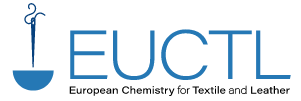With its Strategy on Sustainable and Circular Textiles, that stems from the 2020 Circular Economy Action Plan, the European Commission addresses the textiles value chain with the aim to identify the main obstacles that have hampered circularity up to now, whilst exploring solutions which could be driven either by regulation or by voluntary actions. The key objective is achieving greater circularity, but in the context of the broader agenda set out in the Green Deal, the textiles ecosystem is analysed in parallel to identify further areas where sustainability could be strengthened...
EUCTL welcomes the approach pursued by the European Commission, recognizing that the “textiles ecosystem” is very complex, value chains are long and global and that final articles can be composed of many parts and materials which can contribute in different ways to the environmental impact of the article. A systemic approach is fundamental to tackle challenges and identify opportunities stemming from this complex reality. Focusing on single subjects separately would mean ignoring the complex realities described above
The European Commission considers Ecodesign a key factor for transitioning to more sustainable and circular textiles: products and production processes should be designed in new, innovative ways, taking into consideration the need for recycling materials at the end of life of products and to reduce impacts on health and the environment more generally along the whole life cycle.
When dealing with Ecodesign, the strategy includes a reference to hazardous substances, stressing that their presence in textiles products is already being addressed through the application of the REACH regulation; moreover, it underlines that “the Commission will support industry to substitute as much as possible and otherwise minimise the substances of concern in textile products placed on the EU market, as announced in the Chemicals Strategy for Sustainability”
Companies represented by EUCTL, producing and managing chemical products for textiles and leather in Europe, have invested significant efforts to comply with REACH and to improve its implementation: beyond applying all its rules, they are fully engaged in following the development of restriction and authorisation processes, giving their contribution in terms of knowledge on products and production processes when possible. Moreover, many companies have already adopted measures to minimise the use of certain substances, going beyond the requirement of REACH, by adhering to voluntary schemes on sustainability specifically adopted by the textiles value chain at international level.
With view to possible new workstreams to identify and regulate substances that could cause specific concerns in the textiles value chain, EUCTL stresses the importance of maintaining coherence with the regulatory approach underpinning REACH, which is based on specific risk assessment. Regulatory decisions should not be solely based on the intrinsic hazardous properties of a substance, they must include the assessment of possible exposure to that substance that may occur during its use. Risk assessment is considered a fundamental tool for the regulation of hazardous substances, as it leads to the identification of the circumstances under which a chemical can be used safely.
Chemicals are an absolutely necessary part of the textile and leather manufacture; they are required during the entire process from raw materials processing to the generation of a textile or leather article for the consumer. They are needed, for example, to enhance spinning of fibres and dyeing processes, some of them are applied to grant properties as water and oil-repellence or flame retardancy to final products, to make materials more resistant and subsequently articles more durable. Some of these chemicals have hazardous properties but cannot be replaced by any other substance with the same performance demanded by industry and/or safety requirements. These substances are applied under highest safety standards, assuring safety for workers in the value chain, consumers and the environment. Under these circumstances, the use of the substance should be permitted to maintain the competitiveness of the European chemical industry and connected value chains.
At the same time, research and innovation activities to find alternatives for substances of high concern should be encouraged and supported, as is the case in every other branch of chemistry. EUCTL members are already investing significantly in research and development activities to this end and consider it a key factor for accelerating growth, competitiveness and driving development of the sector towards sustainability and circularity.

